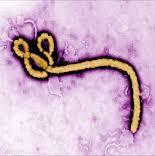We had recently written about the Ebola catastrophe and how it was poised to jump borders and go from an epidemic to a pandemic. While not yet a pandemic (thank your favorite god), it has not yet been brought under control and continues to spread. Spain just had their 1st case and the US just had its 1st casualty in Dallas. News reports now indicate that there may be another case in Dallas and a police officer who was a first responder in Dallas may also have contracted it. Spain (and Europe) are extremely concerned and now the concern has spread to dogs. The pet dog of the nurse that contracted it was euthanized out of fear that it might have the virus and may spread it – without any actual proof that the dog had the virus or was capable of spreading it.
Here is what we wrote a few weeks ago, “After scaling manufacturing, ensuring distribution is still a major challenge. Transportation can only happen if the pilots/crews are willing to go to these areas. That means they need to feel confident they will have access to the drugs, if they are infected. That’s a totally different flavor of Supply Chain Risk Management than we are used to? That logic extends to the distribution channel that actually delivers the drug to the patients (doctors and nurses) and there is a huge shortage of that currently in the infected areas and the supply continues to dwindle as medical professionals are leaving in droves for fear of infection. That risk has to be mitigated for that channel immediately.” And this continues to be a major risk that has not yet been mitigated. As mentioned above, the police officer in Dallas and the nurse in Spain are all part of the “Supply Chain” that is responding to the crisis and unless we are able to manage that risk – we cannot respond!
Evidence of this can be found in the response by the U.S. Thousands of troops are being sent over to construct 17 field hospitals to provide immediate care in the infected countries. But these hospitals are exclusively for the responders– because it is clearly recognized that this is the major Supply Chain risk facing the crisis. Unless we can create a supply chain that can deliver what is needed, where it’s needed – we have no chance of containing this. There are tons and tons of badly needed supplies and medicines that are wasting away in the ports of the infected countries because there is no “supply chain” that can deliver them to where they are actually needed and consumed. The crisis will continue to worsen untill this risk is fixed – the people who dispose of those that died from the disease have recently gone on strike. The impact of this could be catastrophic as disposing of the dead is the biggest threat.
While all this is going on, the U.S. has announced strict monitoring at the airports in the infected areas AND has recently announced similar measures at the U.S. based airports. Every expert opines that these measures have very minimal impact, if any, on managing the actual risk. If these measures had been in place, they would not have flagged the infected individual in Dallas. Similar measures put in place for SARS had absolutely no impact in controlling the spread of that infection. Yet, governments feel compelled to take these measures to satisfy the demands of the general public to do something – anything to control the problem. All these measures do is to make people feel better. If you have gone through the security process at any airport and felt safer – you will understand the dynamics at play here. Every expert will tell you that these security measures at airports have minimal impact on actual safety – they are put in place to make the public feel better.
Supply Chains have an integral part to play when disasters strike and the risk management around these supply chains are totally different. We invite comments on this very critical issue facing us globally and what we can do as a professional community.


1 Comment
Pingback: Ebola, Halloween and Supply Chain Risks | News You Can Use